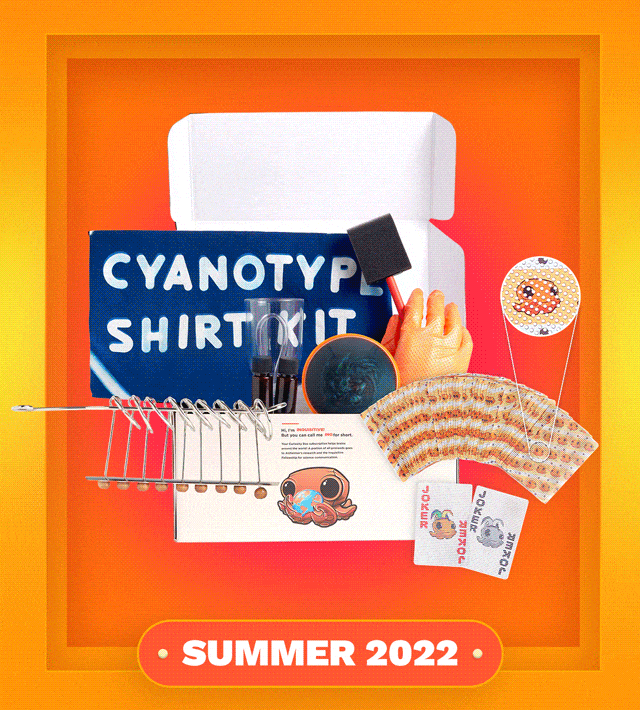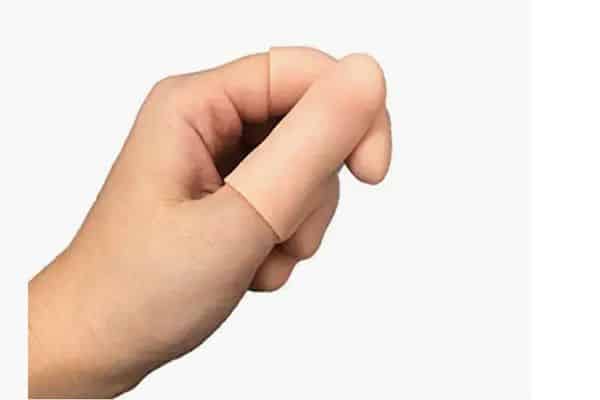Scalp picking and skin picking is not really discussed due to shame but it’s actually pretty common behavior. It is also linked to being neuroatypical (ADHD, autism, OCD etc.) and there are actually a lot of treatment options.
The Shame of Scalp Scabs Picking
I was looking at photos of myself taken at a public event. In one photo I’m happy, laughing in conversation with someone I know.
But then in another photo I am seen in the corner, I’m anxious and my hand is up behind my right ear. I was shocked when I saw this photo because I know what I am doing, and I can’t believe I was doing it in public.

I was picking at a scab on my scalp, which I do when I get anxious. I pretty much always have a scab somewhere on my scalp. If I don’t have one that means life has been going really well. And it is the same for my finger nailbeds, I tend to pick at them too.
The shame I felt when I realized I had been doing this in public, and that it had been photographed? Well, it was pretty severe.

Picking at Scalp Scabs and Skin
Scalp or skin picking is a body focused repetitive behavior and is actually pretty common.
Body focused repetitive behaviors can include scalp picking, skin picking, nail biting, and cheek biting.
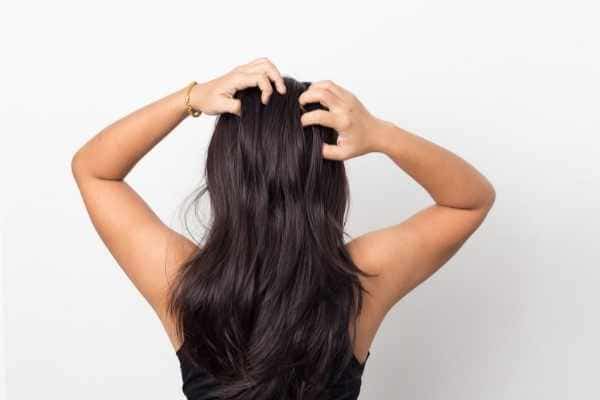
When I learned that this is not a rare situation, I felt a lot better.
Scalp picking, and other body focused repetitive behaviours may be linked to having a neuroatypical brain like ADHD, autism, OCD or even traumatic brain injury.
ADHD and Scalp Picking
If you go on an ADHD facebook group you’ll notice these interesting posts. Some will say ‘Hey, I do this odd thing. I wonder if it is linked to ADHD.”

About 200 ‘What? I do that too!’ posts later everyone is thinking ‘Yep, this is linked to ADHD. Too bad the researchers don’t seem to care.’
Skin and scalp picking definitely seem to fall into this category of behaviors more common in people with ADHD or Variable Attention Stimulus Trait, the term for people with ADHD traits.
It is also interesting that the Amen Clinic’s 7 types of ADHD include ‘Over-Focused ADHD’ which they describe as getting stuck in negative thought patterns or behaviors.
ADHD Treatment For Skin Picking
And there is some research into this link between skin picking and ADHD.
In one case report a young woman complained about constantly scratching at insect bites, even once the initial itching stopped. (Wait, what? this is not normal?)

Previous treatment with SSRIs did not help. The team wondered if she might have ADHD.
Although she did not spontaneously self-report inattention and impulsivity symptoms, her family and friends frequently complained about them.
The patient met DSM-5 criteria for both SPD (skin picking disorder) and ADHD, and her husband and mother confirmed symptoms at clinically significant levels.
Wow! It was basically skin picking that lead to an ADHD diagnosis, and ADHD treatment. The researchers felt that it was the inattention part of ADHD that was linked with her skin picking behavior.
ADHD treatment helped her stop picking her skin! She also found that her mood, academic performance and social relations improved with the long acting methylphenidate.
And when she decided to stop the ADHD meds?
The patient suspended medication by herself twice after the third month and resumed excoriating her skin, which again remitted with therapy.
Meaning- she went back to skin picking without the meds and then was able to stop picking when she went back on the meds.
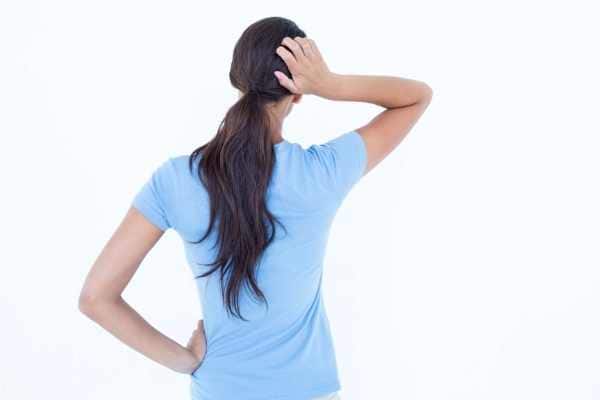
Ummm, that seems pretty impressive evidence that this treatment worked. Admittedly just for one patient, but it is very interesting.
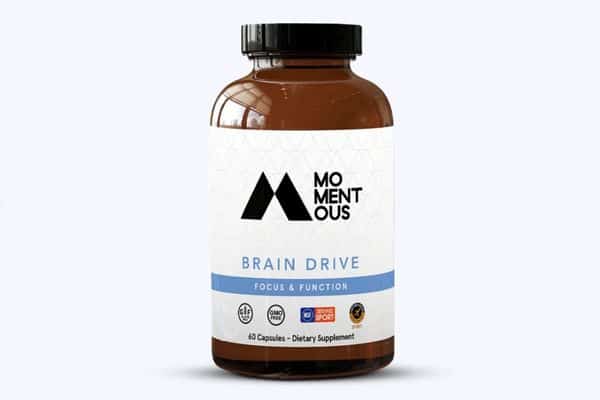
Consult your Physician or Registered Dietitian before starting nutrition supplements.
Ok, let’s look a little deeper into scalp and skin picking. What is it? Why do we do it? What are the treatment options?

What is Scalp Scabs Picking?
Scalp picking is repetitive picking of the scalp, resulting in tissue damage (scabs) and emotional distress.
The medical term for picking at your skin is dermatillomania, so this would be specifically scalp dermatillomania. Some people also pull out their hair, which is called trichotillomania.
Other names are: skin (or scalp) picking disorder, compulsive skin (or scalp) picking, a body focused repetitive behavior (BFRB), neurotic excoriation, and psychogenic excoriation.
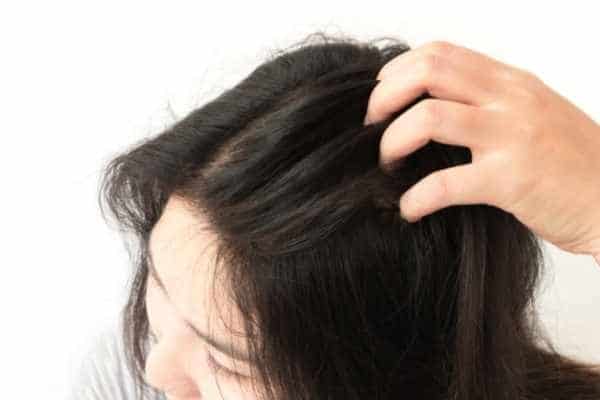
Medically, it has been considered an obsessive compulsive related disorder. However, as seen in the ADHD case above, it probably is more related to impulsivity.
How Does Skin or Scalp Picking Start?
Usually there is a skin imperfection that triggers the picking. A minor bump in the skin like acne, eczema, an insect bite, or a hangnail.
There can be emotional triggers for skin picking: stress, anger, anxiety, boredom while watching TV or reading, or feeling tired.
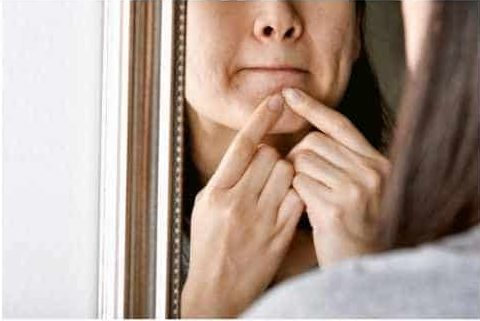
The majority of people seeking treatment for these body focused repetitive behaviors are female. Usually there is picking on multiple sites with the most common being the face, then hands, fingers, arms and legs.
Sometimes the scalp is the area picked because the injury can be hidden by hair.

The Shame of Scalp Dermatillomania and Hair Loss
Tried to stop picking but you can’t? You are not alone!
It is typical to be unable to stop picking despite repeated effort to stop. This leads to shame, anxiety and depression.
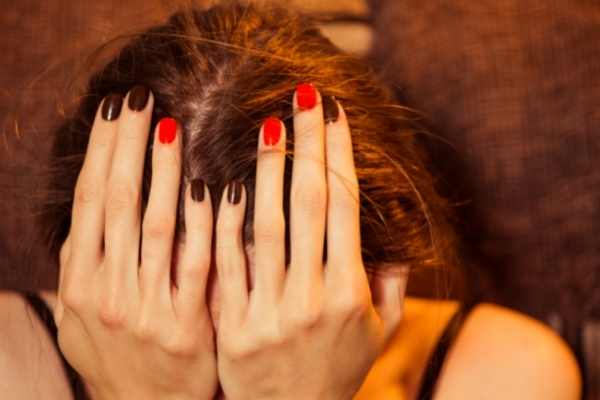
The shame of the picked skin, and the amount of time spent picking.
The presence of scalp scabs, as well as hair loss for those who also pull out hair, can cause shame. This can very isolating if it results in staying home and avoiding events.

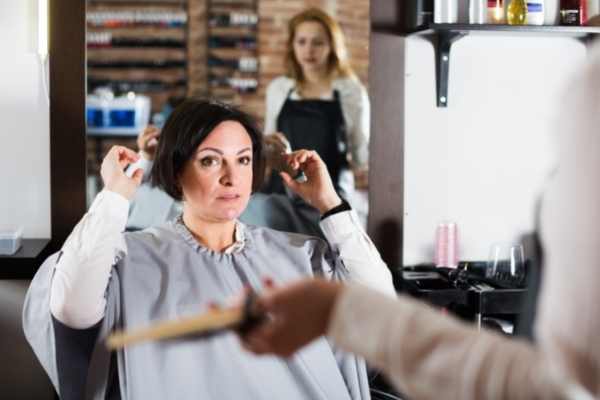
It may be difficult to go to the hairdresser and have someone see the issue up close even though there is a great desire to get help.
In the most severe situations there can even be infections.

Why Do I Pick At My Scalp?
What is the reason people pick their scalps?
Of course there are a ton of theories. Which means we don’t really know.
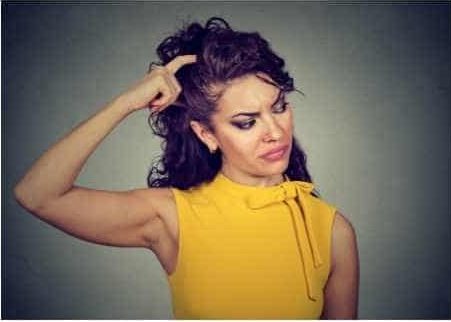
Here are some theories:
- Scalp picking could be used as a coping mechanism for an anxious person. It is seen as a method of exerting control over the environment.
- It can be linked with a lower registration of sensory stimuli. Maybe it is a way for people with poor interoception to feel their bodies.
- It is linked to poor emotional regulation, maybe feeling physical pain is used to deal with emotional pain.
- There is a dysfunction or dysregulation in certain brain circuits that leads to compulsive behaviours.
- There is an imbalance in the glutamine or GABA in the brain which leads to a lack of inhibition.
- The scalp or skin picking delivers a ‘dopamine hit’ in people with ADHD.
- There is a sensory issue, similar to restless legs or Tourette’s. A sensory urge builds up and the tension is only released through the behaviour.
- It should be thought of as a physical tic. Rather than saying a word as in Tourette’s, it is a physical tic.
- It is a way for someone to inflict pain on themselves, as a form of punishment.
- It is a habit, with the person picking unconsciously, not realizing the damage they are causing.
- It is learned behavior, through family members.
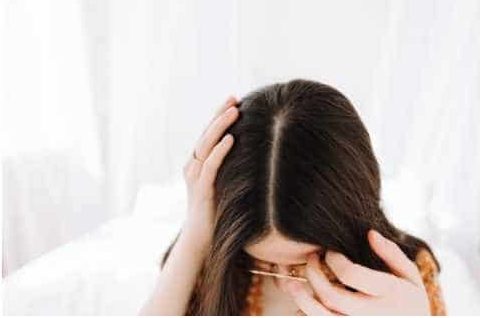
Which theory is correct? Who knows!
Most likely there are different underlying reasons, which may explain why treatments only seem to work for a portion of the people treated.
Have you heard of ADHD Object Permanence?
A new way to think some about of our ADHD quirks!
How to Stop Picking Your Scalp
A lot of people don’t even seek help, it is estimated that only 20% of people who would want help seek treatment!
They don’t seek help because of shame, or the belief that there is no treatment.
Which is sad, because it isn’t just a bad habit, or a lack or willpower. Lots of people have this problem.
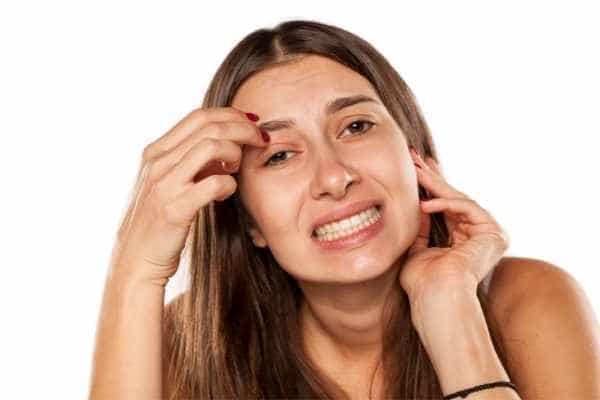
Even just knowing you are not alone with this issue is helpful.
But in addition, there are treatments that can help! It may take a combination of the following treatments, but picking can be reduced or stopped!
Treatment For Head Scratching Disorder
Both psychotherapy techniques and medications have been used to help with scalp and skin picking disorder.
Psychotherapy techniques include:
- Cognitive Behaviour Therapy
- Habit Reversal Therapy
- Acceptance & Commitment Therapy
And there are lots of medication options, which we’ll go through.

How to Stop Picking Scalp: Cognitive Behaviour Therapy
Cognitive Behaviour Therapy (CBT) involves education, restructuring your thoughts and enhancing self-efficacy to prevent the activity.

Did you just learn that scalp or skin picking is more common than you thought and isn’t just a bad habit? That you aren’t the only one struggling with this?
That is the beginning of Cognitive Behaviour Therapy! Adjusting how you think about something.
CBT for Body Focused Repetitive Behaviour Books
Habit Reversal Therapy for Scalp and Skin Picking
A subset of Cognitive Behaviour Therapy is Habit Reversal Therapy, which has been used for a variety of repetitive behaviours. It involves awareness training (self-monitoring) and competing response training (doing something else like fist clenching).
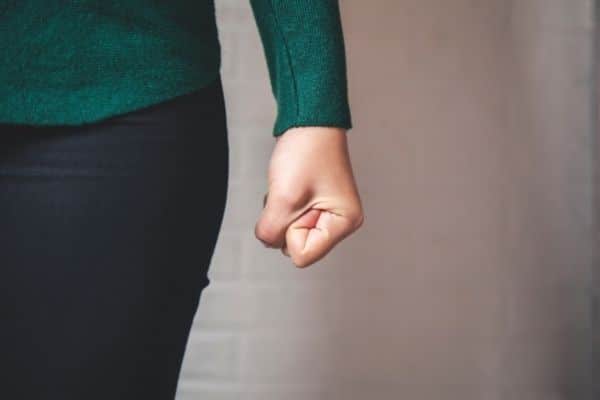
The fist clenching is a useful substitute act, because you can’t pick with clenched fists!
Studies have shown Habit Reversal Therapy to work over only 3 sessions, with skin picking still reduced 2 months later!
Another technique that has been successful is called Decoupling. Decoupling involves redirection. Basically when you go to pick, you move your hand to an area you would not pick, like your ear and you just touch your ear.
You are teaching yourself to not pick by replacing skin picking with a similar action, decoupling the urge to pick from actually picking.
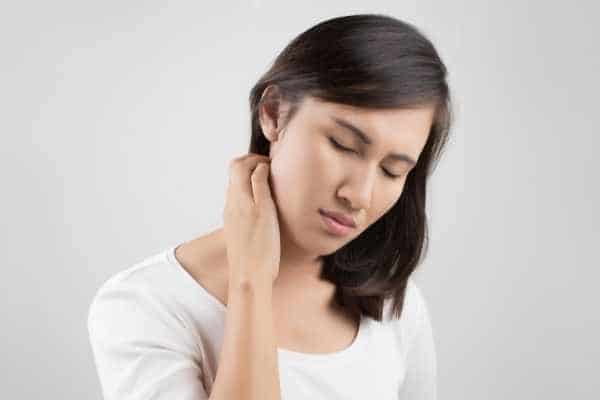
You still have a habit, but it is not as harmful. And it seems to be easier to switch to a similar action than to try to force yourself to not do something. Pretty amazing idea actually!
Habit Reversal Therapy Books
Acceptance and Commitment Therapy to Stop Scalp and Skin Picking
Another form of therapy is ACT (Acceptance and Commitment Therapy) which involves mindfulness and behaviour change strategies.
ACT involves accepting negative thoughts ad emotions, thinking about your personal values and goals and encouraging you in ways to avoid activities that are harmful.
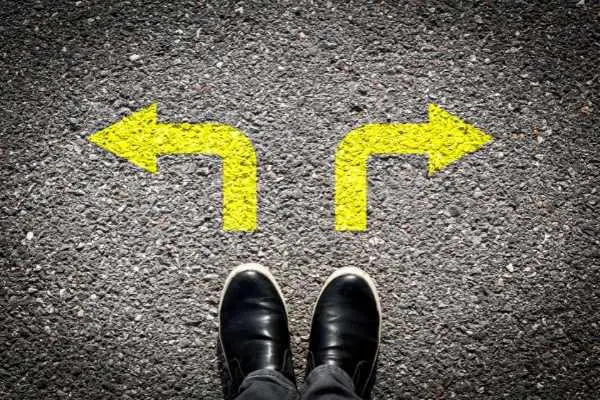
One ACT technique is to stop and consider different moments ‘Choice Points’.
Your decision at a ‘Choice Point’ can lead you ‘Towards’ or ‘Away’ of the person you want to be. It sounds silly, but i certainly have found this technique helpful for recognizing the uselessness of ruminative thoughts.
Acceptance and Commitment Therapy Books

Finger Covers to Stop Skin and Scalp Picking
Often we are picking without even realizing it. I know I do it all the time at home while watching TV, I catch myself and get so annoyed.
So anything that blocks your ability to actually pick the skin will help.
These finger and thumb covers are very comfortable and they stop you from being able to actually pick at your skin. Very easy to wear at home while watching TV.
The other thing is that they help you catch yourself when you first start picking. So you can use the skills you learned with therapy to assess the situation right away.
Why am I picking right now?
What can I do other than pick to relieve this tension?
Finger Covers
While it might seem odd, I actually think you could wear them in public on your index finger or thumb. If you find some that match your skin tone I suspect most people wouldn’t even notice.
And if anyone does notice, you can just tell them you have a cut on your hand and are covering it with these covers given to you by your cool friend who is a chef. This is exactly how I learned about them.

SSRIs to Treat Scalp and Skin Picking
Selective Serotonin Reuptake Inhibitors (SSRIs) are common medications and have been used to treat skin picking.
It seems that for a subset of people, SSRIs work really well. In different studies about half to 2/3rds of the people treated had improvements. Escitalopram, Fluvoxamine, Citalopram, Fluoxatine and Sertraline were all studied.
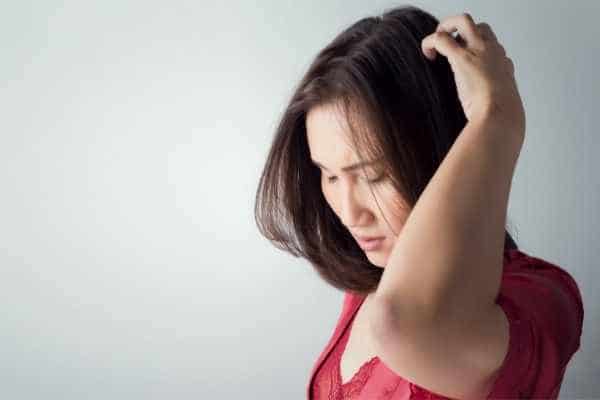
Lamotrigine to Treat Scalp and Skin Picking
There are a couple of studied looking at lamotrigine in treating skin picking. It showed some benefit in one study but in the other, it was not better than placebo.

NAC to Treat Scalp and Skin Picking
N-Acetyl Cysteine (NAC) may be the most exciting medication option for scalp or skin picking. It is a well known medication, and has been used as an antidote for Tylenol overdose and it is FDA approved for this use in the US.
It has been studied for treatment in multiple psychiatric and neurological disorders: schizophrenia, bipolar disorder, skin picking, OCD, autism, various addicitions, epilepsy, ALS and traumatic brain injury.
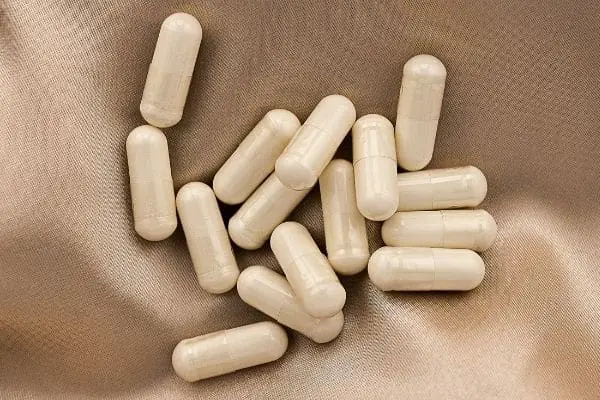
Several case studies showed NAC reduced the amount of skin picking, the most common dose was 1200 mg/day.
Most promising was a double blind study in which NAC treatment improved symptoms of half of the people, compared to only 1/5th of those getting placebo. The dose ranged, 1200-3000mg/day of NAC.
Side effects can include headaches and abdominal cramping and nausea. Starting with a lower dose and the increasing may help reduce side effects.
Buy N-Acetyl-Cysteine
Consult your Physician or Registered Dietitian before starting nutrition supplements.
Naltrexone to Treat Scalp and Skin Picking?
Opioid antagonists like naltrexone have been suggested as an option to treat skin picking. Unfortunately in a double blind study, naltrexone was not better than placebo.
- I totally get this idea. I had also wondered if naltrexone could be a treatment to help people with out of control hyperfixation. Partly because the 2 times I have been prescribed opioids I developed a hyperfixation.
Inositol to Treat Scalp and Skin Picking
Inositol is considered a B-vitamin and has been used to treat skin picking. One small study showed improvement which continued for 4 months.
Side effects can include headaches and abdominal cramping and nausea. Starting with a lower dose and the increasing may help reduce side effects.
Buy Inositol
Consult your Physician or Registered Dietitian before starting nutrition supplements.
Ritalin Treated ADHD Excoriation
Ok, so there is that case report discussed earlier that showed long acting ritalin helped for skin picking in a woman with ADHD. So could ADHD meds help with scalp or skin picking?
It might if your body focused repetitive behaviors are due to ADHD.

Why might ADHD cause scalp or skin picking? Well, based on a variety of questionnaires, the researchers in that case study felt that it was the inattention aspect of ADHD that was most closely linked with the skin picking behaviour.

Other Techniques to Stop Scalp or Skin Picking?
If these body focused repetitive behaviours (BFRBs) are linked to stress (and they certainly are for me!) how about doing something to calm the nervous system overall?
There are a ton of options such as meditation and Non-Sleep Deep Rest and improving sleep.
Non-Sleep Deep Rest is a term for techniques like Yoga Nidra and self-hypnosis which are show to improve relaxation.

Good sleep is clearly an important component of having a balanced nervous system. Exposure to light is an underrated component in treating insomnia, and for some people taking ADHD meds actually helps them sleep better!
Another option is stimulating the vagus nerve. One study showed that people with Prader-Willi syndrome (who often have a lot of BFRB issues) improved with vagus nerve stimulation.
There are lots of ways to stimulate the vagus nerve: simple vagus nerve exercises, and various tech items such as Apollo or sensate.

Summary: Scalp and Skin Picking
In summary, body focused repetitive behaviors such as scalp or skin picking are very common. If this is something you do, you are not alone! There seems to be a link to ADHD, but also neurodiversity such as autism, OCD.
In terms of treatment for scalp or skin picking, there are a lot of options:
Cognitive Training Therapy options such as CBT, Habit Reversal Therapy and Acceptance & Commitment Therapy have had success.
Medication options such as SSRIs, NAC, and ADHD medications may have the most promise for body focused repetitive behaviours (depending on what is the underlying reason for the skin picking).
While there are not a ton of studies on the subject of scalp and skin picking, I was pleasantly surprised to find two recent reviews of treatment options which showed sensitivity towards people who are trying to overcome this habit. They are linked below.

Momentous Brain Drive promotes focus, motivation, and learning by supporting the production of dopamine and acetylcholine. (The neurotransmitters affected in ADHD)
Consult your Physician or Registered Dietitian before starting nutrition supplements.
References
- Skin picking disorder comorbid with ADHD successfully treated with methylphenidate
- Excoriation (skin-picking) disorder: a systematic review of treatment options
- Clinical trials of N-acetylcysteine in psychiatry and neurology: A systematic review
- Drug Treatment of Trichotillomania (Hair-Pulling Disorder), Excoriation (Skin-picking) Disorder, and Nail-biting (Onychophagia)

